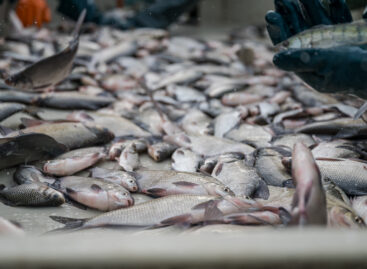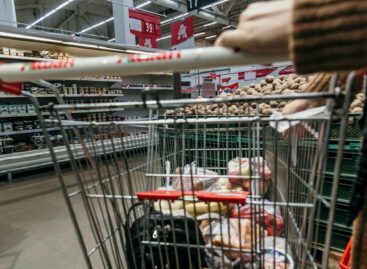Possibility of revival for Hungarian gardening
Gardening is the most diverse sector within agriculture. A program for the modernisation of the gardening sector has bee prepared by FruitVeB (the Hungarian inter-trade fruit and vegetables organisation). According to Béla Mártonffy, managing director of FruitVeB, production is still unable to adapt flexibly to changes in market demand, with a good harvest leading to major problems in sales. Different structures would be needed to serve modern distribution channels. However, the balance of foreign trade still shows a surplus of HUF 50 billion. Fresh fruits and vegetables usually reach consumers via two routes: smaller stores and marketplaces are supplied by small farmers through wholesalers and wholesale markets, while retail chains are supplied by big individual or collective farms (TÉSz).Wholesale markets in Hungary lack many features that similar places in western Europe have and are not seen as a solution to the problems by some experts. The combined market share of modern distribution channels (hyper markets, super markets and discounts) is estimated to be over 50 percent today, with the concentration in sales continuing. According to a recent survey, the average per capita consumption of vegetables in Hungary is 350 grams per day, while the EU average is 534 grams. A program under the name “3×3 every day” was launched by FruitVeB and AMC in 1997, intended to boost consumption to 600 grams per day which would increase demand for domestic products by at least 500 000 tonnes annually. According to Zoltán Házi, CEO of Budapesti Nagybani Piac Zrt, they plan to build new warehouses, logistic and processing centres in order to provide more services for the HoReCa sector. Over 400 000 tonnes of fruits and vegetables were sold here last year, of which 235 000 tonnes were of Hungarian origin. A major problem for the gardening sector is the high but seasonal demand for skilled and unskilled labour. Bureaucracy in labour administration is also a problem. According to Béla Mártonffy, taxes should be determined as lump sums for all plants and technologies. A survey has been prepared by FruitVeB recently about the financial position of organised farmers in the sector. One third of such organisations have an unfavourably high proportion of short term loans. TÉSZ-s can only compete successfully with other trading enterprises if their members receive payment for their produce under similar conditions. However, TESZ-s are often unable to pay on time as a result of a shortage of working capital. Regardless of the customer, farmers are forced to comply with the deadlines for the delivery of goods. Another area where progress has been fast is post harvest activities like packaging. Greenhouse production has the potential to boost the production of fresh vegetables substantially, to two-thirds of total consumption. The main limiting factor in the expansion of the market of good quality fruits and vegetables is the shortage of supply. Half of the total production of fruits and vegetables is processed. The Hungarian processing sector is struggling with a shortage of short-term financing, the contradicting interests of owners, farmers and consumers.
Related news
Related news
CDs and DVDs are experiencing a renaissance at Vatera, but second-hand LEGO is the real star of this Christmas
🎧 Hallgasd a cikket: Lejátszás Szünet Folytatás Leállítás Nyelv: Auto…
Read more >Despite the damage caused by the drought, there will be no shortage of high-quality Hungarian fish
🎧 Hallgasd a cikket: Lejátszás Szünet Folytatás Leállítás Nyelv: Auto…
Read more >Importers’ pricing practices in the focus of the GVH
🎧 Hallgasd a cikket: Lejátszás Szünet Folytatás Leállítás Nyelv: Auto…
Read more >



